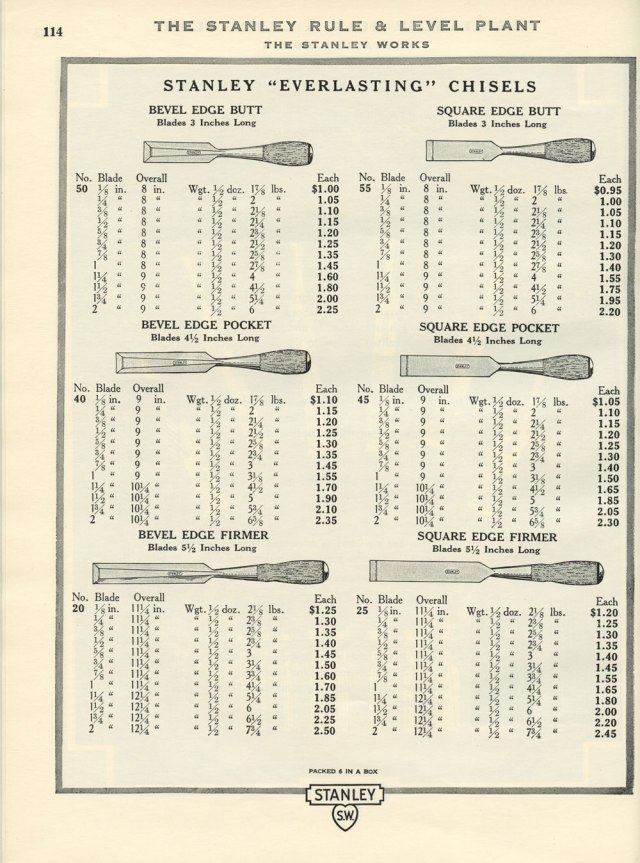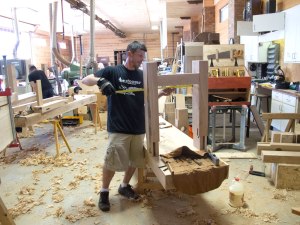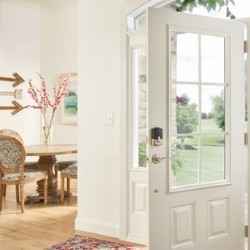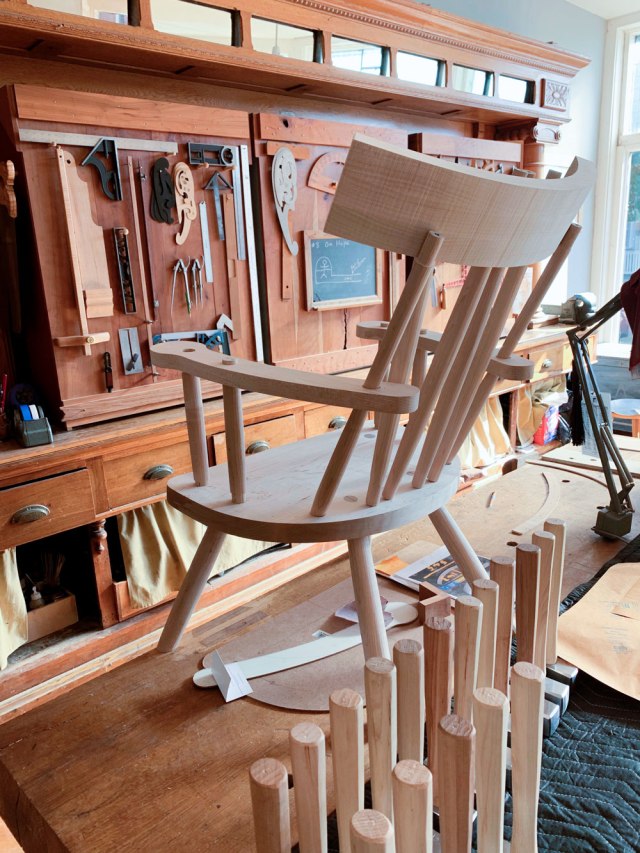Tools in ‘The Anarchist’s Tool Chest:’ Part 4, Chisels & Striking Tools –

When I was a beginning woodworker, I tended to buy sets of tools – sets of carving tools, router bits, clamps, you name it. If you bought a set I usually got a bit of a discount and I got the false impression that I was “done” with carving tools once I bought the “set.”
You know where this is going. Sets (except for sets of drill bits) are for suckers.
My first set of chisels were the Marples Blue Chip chisels. I bought the starter set and saved my money to buy every single size the company offered. After a few years of daily use, I realized that I used only three chisels frequently (1/4″, 1/2″ and 3/4″) and one chisel (1-1/4″) infrequently. All the others collected dust instead of making it. But all that dang blue plastic made me feel like I knew what I was doing.
Bench Chisels
I am certain that some people need lots and lots of chisels – bevel-edge, firmer and etc.. I am not that person. I would rather have a few perfectly tuned tools than 24 in various stages of dull.
So the three bench chisels I have are Lie-Nielsen A2 socket chisels. They fit my hands perfectly. They have wooden handles. They are lightweight. They are balanced. Everything else is fairly irrelevant in my book. My wide chisel is a Blue Spruce Toolworks 1-1/4″ chisel. Before I had the Blue Spruce I had a Buck Bros. chisel that was too soft for woodworking, which was why it probably was a survivor. Most Buck chisels are outstanding and get used to nothingness.
Other Chisels
For mortise chisels, I still have my Ray Iles mortisers. But I have only the 1/4″ and the 5/16″ sizes.The rest I’ve given away to other woodworkers. Those two sizes handle about 100 percent of my hand mortising needs. (Side note: I had a dalliance with the Narex mortisers that did not end well. They were astonishingly soft.) I have a fishtail chisel for half-blind dovetails from Blue Spruce Toolworks. It’s a luxury, but one that I appreciate when making drawers and rabbeted full-blind dovetails for casework.
I thought this blog entry would be longer. After all, we’re talking about chisels. Shouldn’t I have a long list? Apparently not. Let’s talk about striking tools.
Mallets & Hammers
I still have my same Blue Spruce 16-ounce resin-impregnated round mallet I’ve had for years. Its head still has only minor marking on it, which is unbelievable. That mallet is an extension of my hand and I cannot imagine replacing it.
I also have a 2-1/4 lb. lump hammer (also called an engineer’s hammer) that I use for mortising, assembly, disassembly, feline discipline and setting holdfasts. You can buy these on eBay or at hardware stores for a pittance. Old ones seem to bounce around a lot less than the new ones. After saying my vows to the lump hammer I got rid of my square-headed wooden mallets, which freed up a lot of space in the chest.
For driving nails, I have two claw hammers: a vintage 16 oz. hammer with an octagonal handle and an 8 oz. hammer with a roundish handle. The big hammer drives nails. The little one drives brads and pins, and it adjusts my plane irons (sometimes in tandem with my round wooden mallet).
Hammers are as personal as knives or things you put in your nether regions. So brand names aren’t going to help you. I say you should handle a lot of hammers; unlike when choosing a mate you are unlikely to catch any diseases. Once you settle on a hammer, switching to another one will result in serious consequences, especially when it comes to your hammerschlager skills.
Other striking tools in my chest include some nail sets (also called “nail punches”), a dowel plate for skinning dowels and drawbore pegs and my shopmark from Infinity Stamps.
— Christopher Schwarz
Part 1 of this series on handplanes can be found here.
Part 2 on saws is here.
Part 2-1/2 on frame saws is here.
Part 3 on marking and measuring is here.



